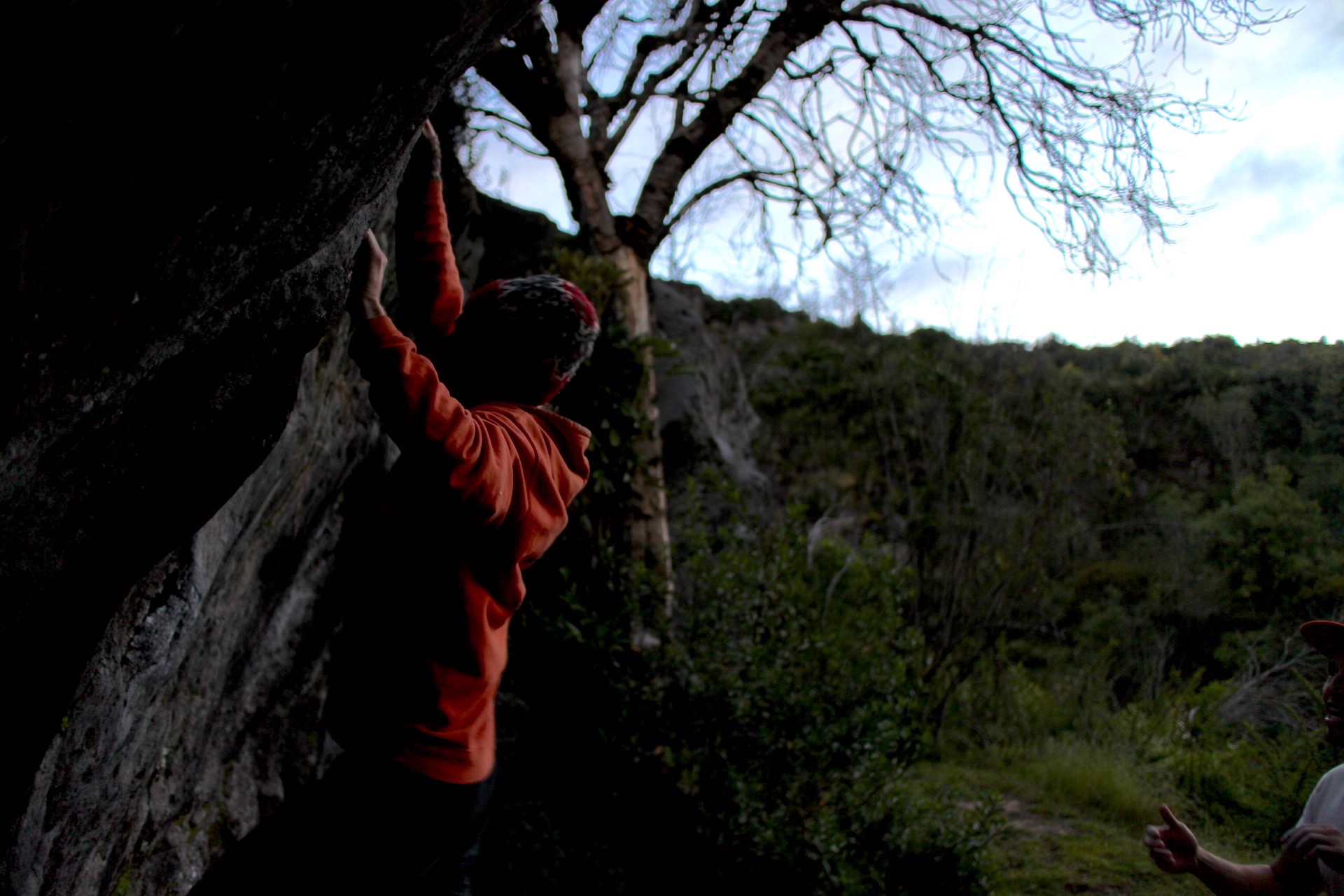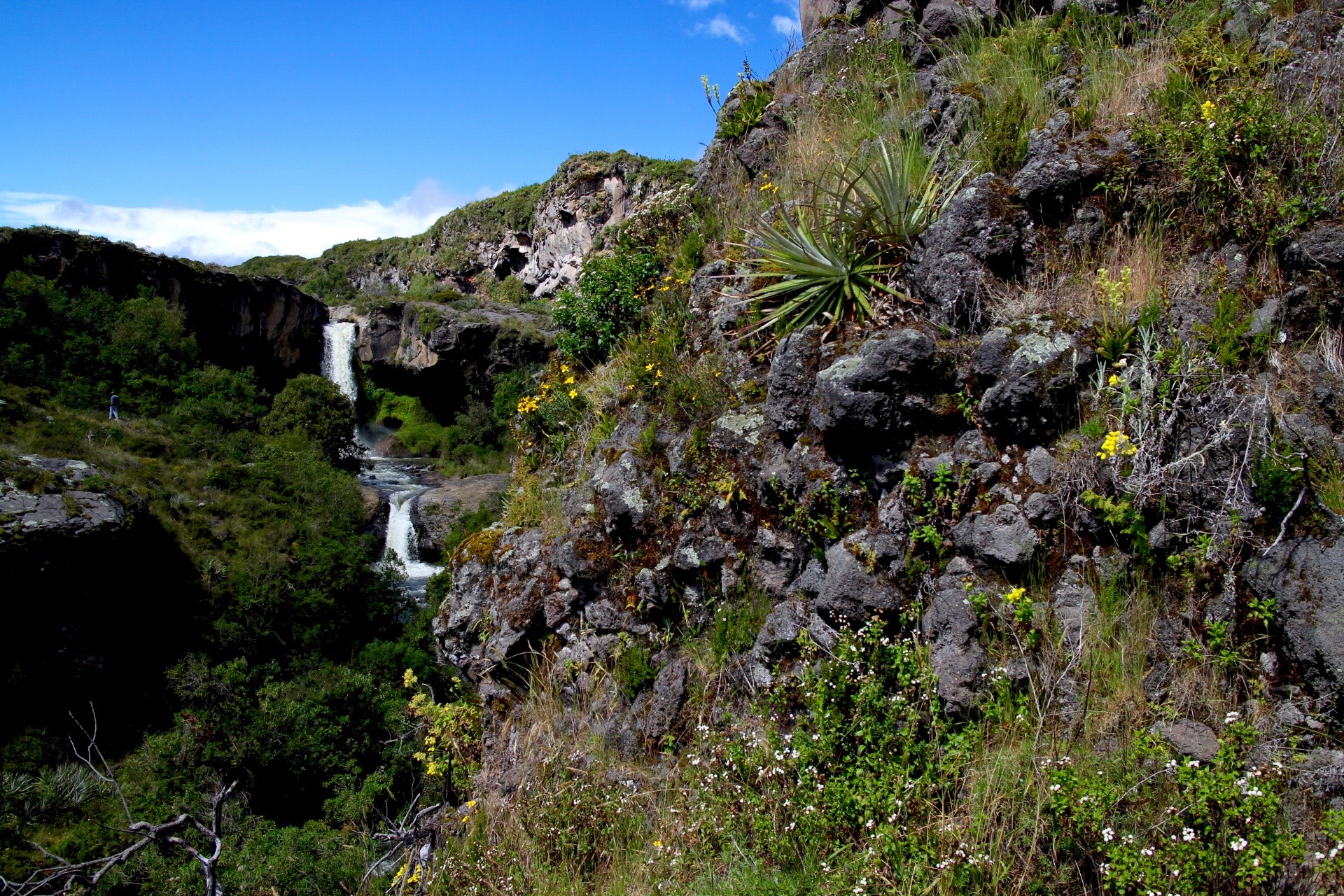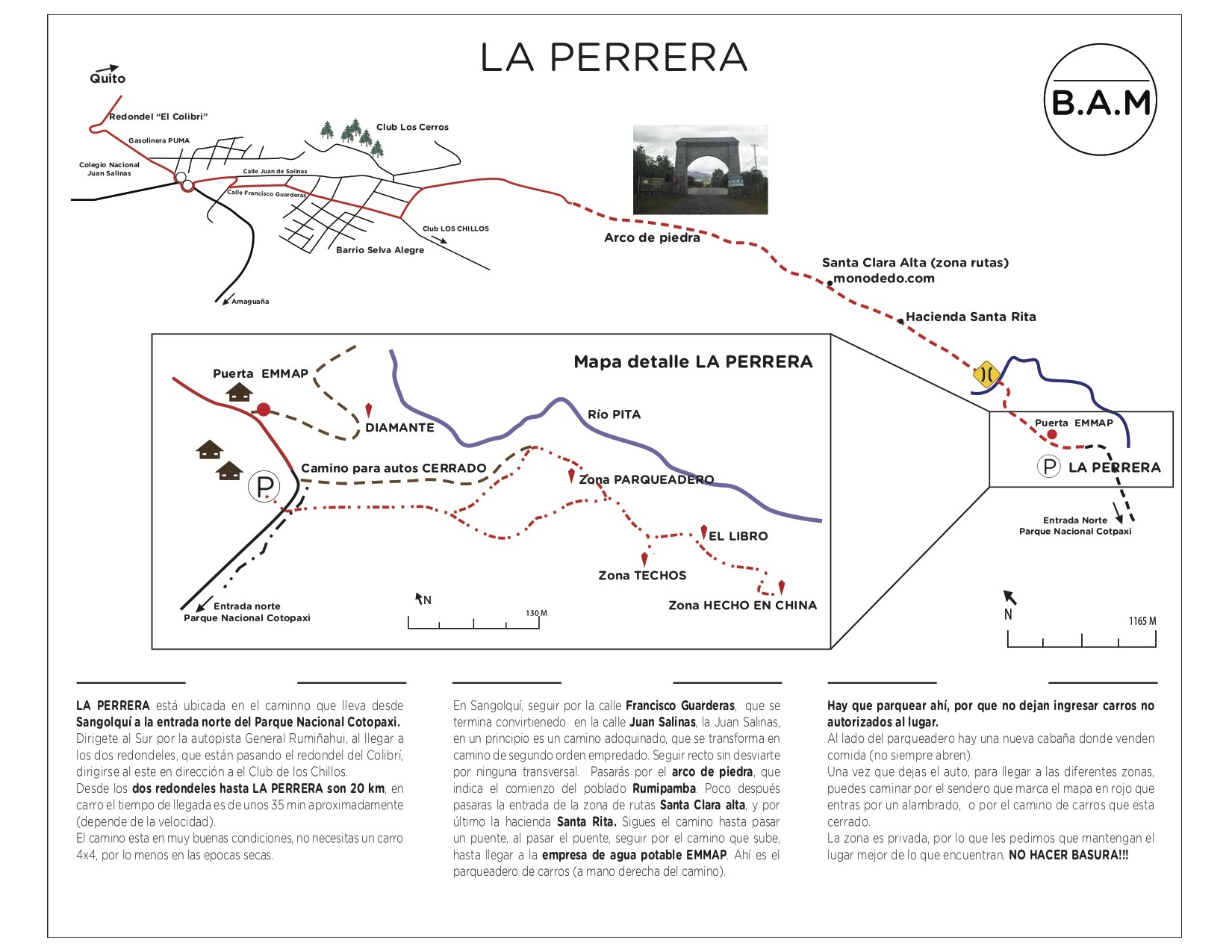Second Impressions: La Perrera's volcanic wonderland
 Morgan working White Rasta (V6) near the campsite at twilight.
Morgan working White Rasta (V6) near the campsite at twilight.
I believe the first phrase I used to describe the boulders at La Perrera was “Cotopaxi’s dried-up lava barf.”
While these gray beauties are mementos of volcanic eruptions past, that description may not capture the magic of this place. In fact, after a weekend in the lush green playground of igneous rock and baby waterfalls, I still don’t think I’ve processed the wonder.
La Perrera is, as I mentioned before, the Quito area’s newest bouldering zone. It’s about an hour south of Quito, just outside of Sangolquí and near Cotopaxi National Park. Volcán Cotopaxi, if you don’t know, is an active volcano about 50 kilometers (30 miles) from Quito. You may have heard about it when it started erupting last year. At 5,897 meters, it’s Ecuador’s second-highest peak, and it towers at a distance over La Perrera’s little boulders.
I bused to the magic Saturday morning with two Quiteños, Alexis and Sergio, and two of my English friends, Morgan and Beth. We set up camp in a grassy hollow bordered by boulders, then made our way from front to back — kind of. Maybe just to the back of the front section. One Perrera frequenter said there are around 70 boulders being developed here, not to mention all the untouched rock across the river.
There’s no topo for this area yet, much less a guidebook. Bloque A Muerte made a video last year, which might help a bit with finding grades and beta. But this weekend we just enjoyed exploring lines without really knowing what we were getting into.
Although I’ve only climbed a little of what La Perrera has to offer, the stylistic variety of this crag is already clear. You can find juggy roofs, slopey faces, and crimpy slabs within a few feet of each other, and textured pinches coexist with porous crimps and polished slopers.
Although I am definitely psyched on everything about this crag, it may not be the most beginner-friendly. Problems within the V1-V2 range exist, but they tend to be pretty high and scary. I’m not sure I would have tried some of the warmups as a new climber, but then again, I’m from the land of slopey lowballs — maybe beginning Quito climbers are gutsier than I was! And the area is still being developed, so who knows what the future holds?
If you come to Ecuador with climbing plans, bouldering at La Perrera should definitely be on your list. It’s serene and full of life, with some really interesting boulders. It’s also not far from Santa Clara, one of the area's premiere sport crags.
But walking over lush green grass on Sunday morning, surrounded by wildflowers and grazing cows, I thought of something North Carolina trad bastion Jeep Gaskin told me about slowly witnessing the price nature has paid for the growth of climbing:
Jeep told me during an interview that the trillium at Rumbling Bald, a popular NC bouldering spot that once was “flower city,” have all but disappeared. Even with myriad organizations dedicated to damage control and ethics education, it’s rare to find a U.S. crag with zero graffiti, and it’s not hard to locate pesky plastic corners nestled in the dirt. I thought about how sad it would be to see La Perrera’s vitality destroyed by irresponsible humans in 10 or 20 years. This place is full of potential and practically untouched, and we have to be good stewards to keep it healthy.
 Let's not ruin the shire.
Let's not ruin the shire.
So. If you’re thinking about a climbing trip to el Mitad del Mundo, and you pinky promise to take care of La Perrera, this information might be useful:
Bus Directions from Quito, Ecuador to La Perrera
If you have a car, and your car is pothole-ready, by all means drive to La Perrera. But if you are carless like me, or if you just enjoy the experience of taking public transit in a foreign country, you can catch the Vingala bus for 50 cents at the corner of General Veintimilla and Isabel la Católica in Quito. We took that to Selva Alegre, and from there we paid $20 for a camioneta to the EMAAP, toward Cotopaxi National Park’s northern entrance. (I’m sure there are cheaper ways to arrive, but they probably take more time.) The approach is obvious from there.
La Perrera is very close to Cotopaxi. Any time you’re thinking about climbing there, make sure to check the volcano’s status. If an eruption looks imminent, go somewhere else.
Are you thinking about an Ecuador trip yet? Or do you have any beta for La Perrera? Leave it in the comments!
Oh, and don't forget to like Eat & Climb's new Facebook page! <3 [youtube https://www.youtube.com/watch?v=H_1h4tFjIqU] Map and video courtesy of Bloque A Muerte.
Map and video courtesy of Bloque A Muerte.